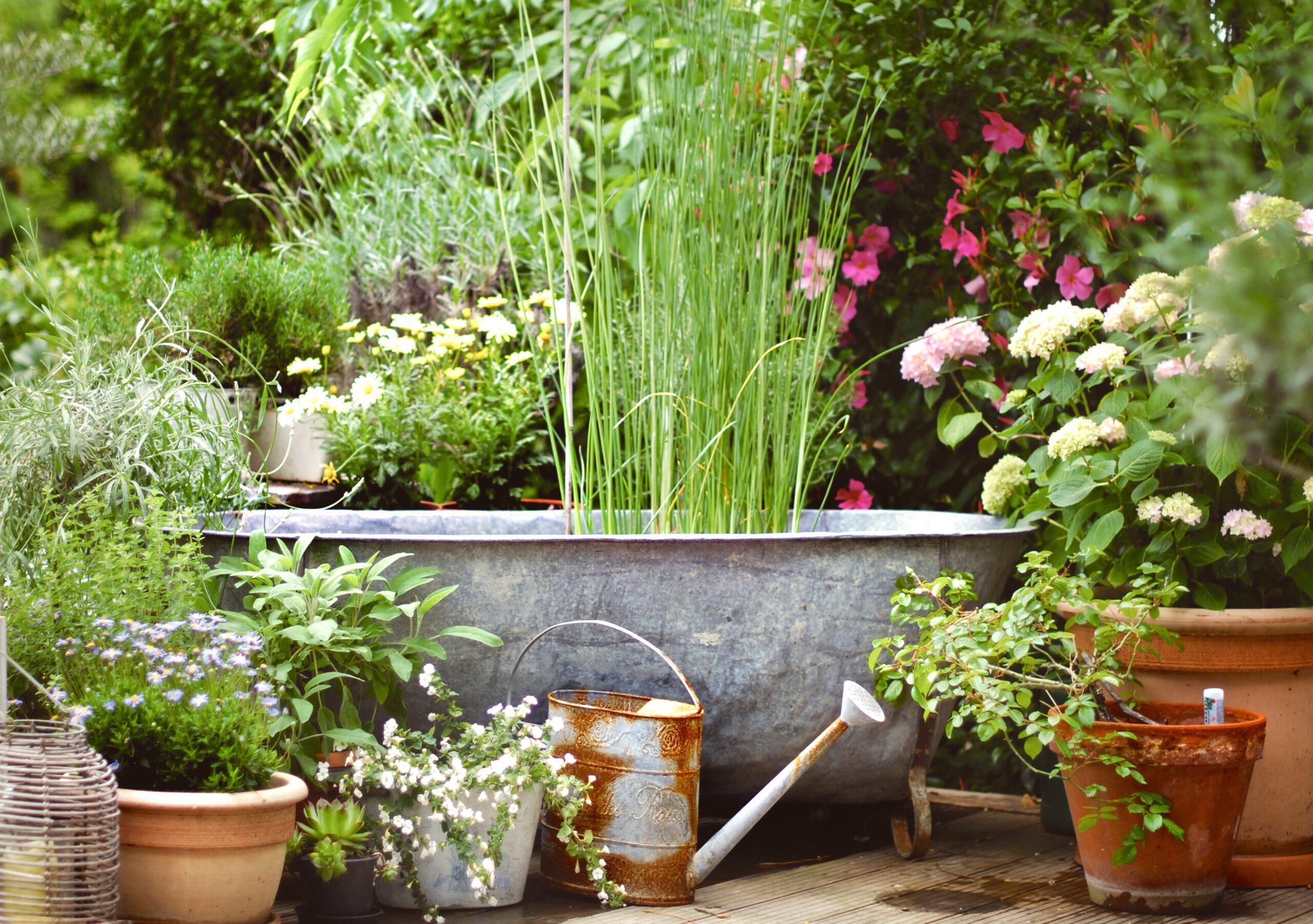As the bags at one of our favourite stores always say, ‘contain yourself.’ Cause container gardening offers many benefits versus traditional in-the-ground gardening. It is a good space saving option if you don’t have a large garden or live in an apartment building with limited outdoor area. And if getting down and dirty in your garden makes your back ache just thinking about it then having plants higher up can help. The best bonus of all is that there are far fewer weeds to pull and plants to deadhead when they’re in a container.
There’s no need to ‘contain yourself’ when it comes to container gardening. Here’s some tips to get started:
Best Planters
There are a variety of planters that come in different shapes and sizes and are available in various materials. When selecting a planter, consider the style of your outdoor area and the types of plants you’ll be placing in it. Here’s some we like:
- Ceramic Planters: They’re available in many colours and textures to match the design of your space. Ceramic tends to be heavier and breakable compared with other planters so mull over if these features will work for your needs.
- Plastic Planters: These tend to be durable and flexible and varying temperatures don’t really affect them much. They are also a lighter weight and suitable to use if you tend to move your containers around a lot.
- Wood Planters: Make sure you get them in rot-resistant hardwood, cedar, or pressure-treated wood to protect against sunlight, moisture, and frost. Wood is best for drainage since it is easy to drill holes in it so the water has a place to go.
- Metal Planters: Galvanized tubs and buckets are great options but be aware that they will heat up quickly in the sun. Protect the plants with garden fabric lining and put them in a shady spot.
Best Types of Flowers
Perennials are best for container gardening to save time and money on not having to buy new plantings each year. They also give you a head start over annuals because perennials can handle colder weather and be planted in the early spring. Here’s some suggestions for perennials we think thrive best in containers:
- Golden creeping Jenny: It cascades beautifully over the rim of a pot with golden, coin-shaped leaves.
- Bergenia: This strong grower has bold leaves and pink blossoms that shine in containers.
- Heuchera: Add these low growers to provide interest below the taller plants.
- ‘Emerald’ arborvitae: Insert this perennial for some height although a container should keep it under its natural size of 15 feet high.
- Calibrachoa: This plant works best in hanging baskets since they have long trails of billowy flowers.
- Angelonia: Use this in a small container and its upright spikes of white, blue, purple, pink or red will be a focal point.
Best Ways to Plant
There are different rules to follow for planting a container garden versus in-the-ground gardening. To get aesthetically pleasing looking containers you should consider the size, shape, and colours of the plants you’re using. Come by Clearview Garden Shop for the best guidance on which plants will work best with which containers and consider these planting tips:
- Be careful not to overfill a container and overcrowd the plants. These are general guidelines for pot size-to-plant ratios:
- 10″ pot can house 5 plants.
- 12″ pot can house 5 to 7 plants.
- 16″ pot can house 9 plants.
- 22” pot can house 11 plants.
- Think about the theme of colours of the plants. You want to complement the colour of the container plus the colours of other plants. Before planting, do a trial and group the plants together to see what looks best.
- Try to use an odd number of plants to give your container a more designed and asymmetrical look. A good rule of the green thumb is to have a thriller, a filler, and a spiller.
- Thrillers add height, drama, and a vertical element and typically go near the centre of a container. We suggest a patio Gerbera or calla lolly for smaller containers. A green leaf or dark leaf banana looks great in a larger planter.
- Fillers tend to be more rounded or mounded plants and generally are placed in front of or around the thriller. Try a geranium, Solenia begonia, or coleus.
- Spillers are trailing plants that hang over the edge of the container and are planted on all sides. We recommend calibrachoa, petunia, bacopa, or scaevola.
Best Watering Methods
Drainage is the most important consideration when it comes to watering your containers. Place a few small rocks or broken pieces of clay pots on the bottom of the containers to help with drainage but make sure you’re not blocking the holes. We suggest using potting soil mix which makes it easier for containers to drain while retaining enough moisture for the roots to absorb. Container plants usually need to be watered more frequently than those in the ground so follow these tips:
- Water the plants daily in the morning to allow them to dry out before nightfall.
- When watering, stick the hose or wand in the pot at soil level and use a gentle stream of water, not full power, or the soil will wash out of the container.
- Let approximately 10% of the water flush through the pot to help wash away any build up of salts in the soil which is a common problem in containers.
- If you use a saucer under the pot, make sure to keep it emptied so that the plant roots do not rot when sitting in the collected water.
Container gardening is a great option for both beginning and seasoned gardeners alike. It let’s you play with different plants, colours, and themes and customize them to your taste. You’ll have so much fun with it that you’ll hardly be able to contain yourself!
Free Gardening Resource
THE ULTIMATE GUIDE TO CLEMATIS!
Sign up for our newsletter and get your copy!

